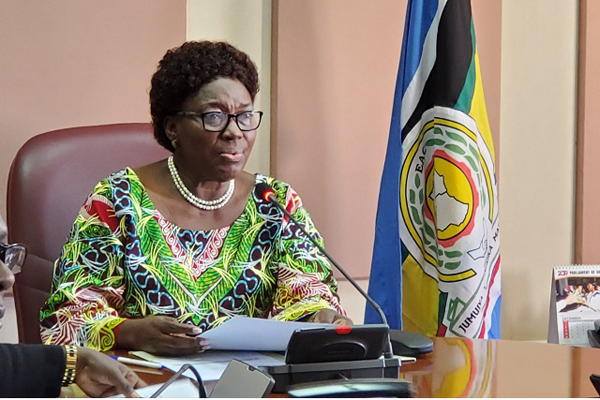EAC trade debates must include more than milk

Trucks queue at the Busia-Malaba border after Kenyans striking over a maize ban from Uganda blocked the border. PHOTO | FILE
What you need to know:
- The issue: Bilateral trade
- Our view: Some of the key elements of the Common Market is free movement of goods, persons, labour, services and capital. However, this has not been realised for most business people in Uganda.
Kenya President William Ruto hit the ground running by trying to calm the nerves over the longstanding trade dispute between Kenya and Uganda.
The focus is milk. In a recent speech to the Kenya business community, President Ruto implored his country to embrace milk from Uganda. “Uganda should bring cheaper milk because they can produce it much more cheaply. We should be adding value to our milk,” President Ruto said recently.
Before the 2019 ban, Kenya accounted for 74 percent of Uganda’s milk exports, which totalled $131m (about Shs497b) in 2018. That declaration by President Ruto was a bold effort to ease trade tensions between the two East Africa Community (EAC) members.
Kenya has this year imposed new taxes on poultry, eggs, milk, sugar and other Ugandan products in contravention of EAC regulations.
The EAC treaty stipulates that the members shall now belong to a Common Market. The Common Market is the second regional integration milestone of the EAC, which has been in force since 2010, in line with the provisions of the EAC.
It follows the Customs Union, which became fully-fledged in January 2010. Some of the key elements of the Common Market is free movement of goods, persons, labour, services and capital.
However, when you speak to the business community, especially in Uganda, most of these benefits have not come to them.
While the discussion this week has centred around milk, it’s not very different for rice, maize, sorghum and many other products. Many citizens still have to apply for work permits once they cross borders and businesses still view each other with suspicion.
Severally, Tanzania has always been accused of never buying in. Perhaps the East African Crude Oil Pipeline (EACOP) Project that runs from Uganda to Tanga at the coast will change that.
In addition, conflicts have existed for long amongst Burundi, Democratic Republic of Congo (DRC), Rwanda and Uganda. Only Uganda seems to have embraced integration fully with hardly any significant barriers and most protectionist policies scrapped.
President Ruto’s assertions about milk should be referred to the East African Business Council (EABC).
The council’s mandate is to expedite the formation of a trade remedy committee to deal with disputes and cut disruptions.
These persistent trade disputes are down to the absence of a permanent coordinating body to detect and resolve the disputes. Among the issues that must be discussed are the modalities of implementing decisions taken after political and diplomatic decisions of the two countries.
When you listen to presidents speak, you may think barriers were scrapped but they still exist, and it’s not just milk.




